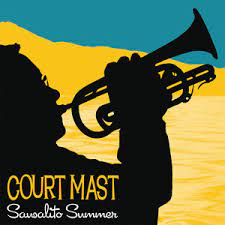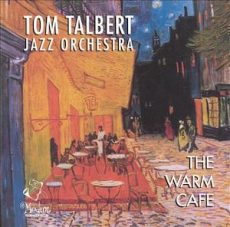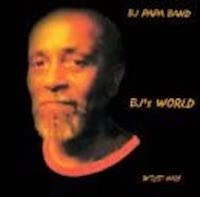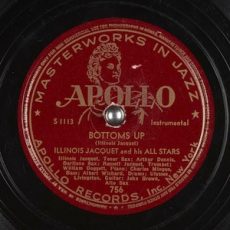
Daily Dose Of Jazz…
Court Mast was born Corky Miller on August 24, 1951 in Sunnyvale, California, where he took up the accordion and then trumpet in grade school. He went to Fremont High School, graduating in 1969. He traveled to Europe on tour with 120 high school and college musicians. Trumpet great Raphael Mendez was on board as guest artist, and Corky took six weeks of private lessons from the master. Returning to the Bay Area, he began performing in big bands around the South Bay and Peninsula and performed with the earliest version of the band that went on to fame as Tower of Power.
While taking performance and composition courses at De Anza College, Corky stayed active in a wide variety of bands, playing rock, jazz, Latin and Mexican music that kept this young working trumpeter onstage. By 1977 he moved to San Francisco, California where he led quartet and quintet jazz groups active on the North Beach music scene and in funky venues like the Hotel Utah.
Disillusioned with the direction that popular music, and jazz in particular, was moving in, in 1983 Miller stepped away from the music world. He became a surfer, changed his name to Court Mast, got into photography and became one of San Francisco’s leading commercial photographers. Then in the first decade of the new century his love of music returned and in 2008 he recorded his debut album Sausalito Summer
Composer and cornetist Court Mast, whose influences have been Henry Mancini, Chuck Mangione, Maurice Ravel, Duke Ellington, the Beatles, Steely Dan, Clifford Brown and Thad Jones, continues to compose and perform as well as maintain his photography.
More Posts: bandleader,cornet,history,instrumental,jazz,music

Daily Dose Of Jazz…
Thomas Robert Talbert was born on August 4, 1924 in Crystal Bay, Minnesota and grew up listening to big band music on the radio. He learned to play piano before he became a composer. He got started as a band leader when he was drafted in the Army in 1943, becoming composer for a military band at Fort Ord, California, performing for War Bond drives throughout California.
In the late 1940s he led his own big band on the West Coast, much of his work foreshadowing what became known as West Coast jazz. During the decade in Los Angeles he worked with Johnny Richards, Lucky Thompson, Dodo Marmarosa, Hal McKusick, Al Killian, Art Pepper, Steve White and Claude Williamson…….
Moving to New York in the early 1950s after being denied a recording contract in Los Angeles, California he worked with Marian McPartland, Kai Winding, Don Elliott, Johnny Smith, Oscar Pettiford, Herb Geller, Joe Wilder, Eddie Bert, Barry Galbraith, Aaron Sachs and Claude Thornhill. In 1956, Talbert recorded two records that would become his best known works, Wednesday’s Child and Bix Duke Fats, which gained him fleeting fame.
When rock and roll eclipsed jazz in popularity, in 1960 he moved to his parents’ home in Minnesota. He tried his hand at cattle ranching in Wisconsin but eventually moved back to Los Angeles and a musical career in 1975. As a sideman he recorded with the Boyd Raeburn Orchestra, Johnny Richards, and Patty McGovern.
In addition to composing for TV and movie studios, he became involved in music education, and set up a foundation to help talented young musicians, with one of the first recipients in 1996 was Maria Schneider.
Pianist, composer and band leader Thomas Talbert, who recorded eighteen albums as a leader, transitioned on July 2, 2005 in Los Angeles.
More Posts: bandleader,composer,history,instrumental,jazz,music,piano

Daily Dose Of Jazz…
B.J. Papa was born on February 9, 1936 in Mobile, Alabama and as a child in the 1940s he was listening to all kinds of jazz and blues on the radio. Drafted into the Army in 1954 he became a medic and was stationed in San Francisco, California at Letterman Hospital in the Presidio. However, he ended up spending much of his service time playing on Army ball teams. By the time he turned 19 he found himself intrigued with the jazz bands booked into the Army noncommissioned officers clubs.
After his discharge from the service in 1956 Papa stayed in town and began saxophone lessons. He also made his first forays into the heart of the bustling Fillmore Street jazz community and would show up to listen and learn at the famous after-hours jams at Jimbo’s Bop City.
Over the course of his fifty year career Papa became a North Beach institution mentoring dozens of young cats making their transition from student to professional musician. He played with the biggest names in jazz to come through the city as well as passionate laymen sans pedigree.
Settling in at Jazz At Pearl’s, one of the few remaining jazz clubs that still possessed an air of authenticity before closing its doors, for thirteen years he shared the stage with an eclectic, enthusiastic audience nightly.
Pianist B.J. Papa, who always fed on and drew from the energy of the audience but has no recordings on line, transitioned on August 31, 2008.
More Posts: bandleader,history,instrumental,jazz,music,piano

Daily Dose Of Jazz…
Ulysses Livingston was born on January 29, 1912 in Bristol, Tennessee and played in the band of the West Virginia State College. He began his professional career in music in the Horace Henderson band as a roadie, or, as Henderson called them, valet.
After his period with Henderson he played guitar in carnival bands on traveling road shows. By the middle of the 1930s he began to get jazz gigs with Lil Armstrong, Frankie Newton, Sammy Price, Coleman Hawkins, and Benny Carter.
Moving to New York City, Ulysses accompanied Ella Fitzgerald on tour and on record. He served briefly in the military during World War II, but returned to jazz playing on the West Coast in 1943. He played with Cee Pee Johnson in Hawaii four years later.
Alongside his guitar playing, Livingston also sang with the Spirits of Rhythm, and led a group called the Four Blazes. From the 1950s he did freelance work with West Coast jazz musicians and also became active as a record producer.
He would go on to record with the Varsity Seven, Jazz At The Philharmonic, Illinois Jacquet, Rex Stewart’s Big Eight, Pete Johnson and numerous others. Guitarist Ulysses Livingston, who also played and recorded on electric bass guitar, transitioned on October 7, 1988 in Los Angeles, California.
More Posts: guitar,history,instrumental,jazz,music

Daily Dose Of Jazz…
Curtis Sylvester Lowe, Sr. was born on November 15, 1919 in Chicago, Illinois and raised in Oakland, California. He first learned to play soprano saxophone as a youth and studied briefly in Alabama before deciding to take up music full-time. Best known professionally as a tenor and baritone saxophonist, he played in traveling bands before the outbreak of World War II. Enlisting in the United States Navy in 1942, his unit band was full of noteworthy jazz musicians, including Vernon Alley, Wilbert Baranco, Buddy Collette, Jerome Richardson, Ernie Royal, and Marshall Royal.
In the 1950s Curtis worked extensively with Lionel Hampton and also played with Dave Brubeck, Little Esther, Johnny Otis, and Gerald Wilson. He led his own five-piece ensemble in 1952-1953. In 1958 he began a decade-long association with Earl Hines.
He was active locally in San Francisco, California and the Bay Area into the 1980s. Saxophonist Curtis Lowe Sr., who never recorded as a leader, transitioned at the age of 73 on October 29, 1993.
More Posts: bandleader,history,instrumental,jazz,music,saxophone




